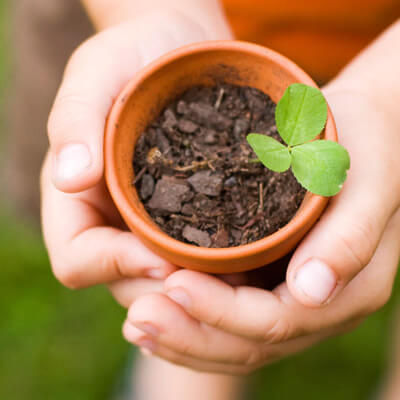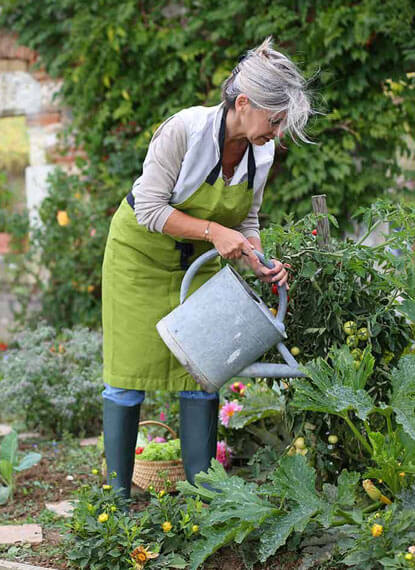How To Grow Moringa In The USA
Moringa, also known as the “miracle tree,” is a highly nutritious plant that is rich in vitamins, minerals, and antioxidants. This amazing plant has been used for centuries in traditional medicine to treat a variety of ailments and promote overall health and wellness. With its growing popularity in the US, more and more people are interested in learning how to grow moringa in their own gardens. In this article, we’ll provide a comprehensive guide on how to grow moringa in the USA, from choosing the right variety to harvesting and using the plant. Whether you’re a seasoned gardener or a beginner, this guide will provide you with all the information you need to successfully grow this amazing plant and reap its numerous health benefits. So, let’s dive in and discover the wonders of growing moringa in the USA!

Choosing the Right Variety of Moringa
When it comes to how to grow moringa in the USA, choosing the right variety of moringa is crucial. There are several types of moringa plants available, each with its own unique characteristics and growth requirements.
One of the most popular varieties of moringa is
, which is known for its high nutritional value and fast growth rate. This variety can grow up to 20 feet tall and is ideal for warmer climates.
Another popular variety is the Dwarf Moringa, which is smaller in size and perfect for growing in containers or smaller gardens. This variety is also known for its high nutritional value and can be grown in a wide range of climates.
If you live in a cooler climate, the PKM-1 variety of moringa may be the best choice for you. This variety is more cold-tolerant than other types of moringa and can still produce a good yield even in cooler temperatures.
When choosing the right variety of moringa, it’s important to consider factors such as your climate, available space, and desired yield. By selecting the right variety, you can ensure that your moringa plants will thrive and provide you with an abundant harvest of nutritious leaves, seeds, and pods.
So, take some time to research the different varieties of moringa available and choose the one that best suits your needs. With the right variety of moringa and proper care, you can enjoy a bountiful harvest of this amazing plant right in your own backyard!
Climate and Soil Requirements
Growing moringa in the USA requires certain climate and soil conditions to be met. To get the best results, it is important to choose the right location for planting and to prepare the soil properly.
Moringa is a tropical plant that thrives in warm and humid conditions. The ideal temperature range for growing moringa is between 70-95°F. If you live in a cooler climate, you can still grow moringa by planting it in a greenhouse or in a warm, protected area.
Moringa also requires well-draining soil that is rich in organic matter. The soil pH should be between 6.5-7.5 for optimal growth. If your soil is acidic, you can add lime to raise the pH level.
Before planting moringa, it is important to prepare the soil properly. Start by removing any weeds or rocks from the planting area. Then, add compost or well-rotted manure to the soil to improve its nutrient content. Mix the compost or manure into the soil well, and ensure that the soil is loose and aerated.
To retain moisture and improve soil fertility, you can also add a layer of mulch around the base of the moringa plants. This will also help to control weeds and regulate soil temperature.
By providing the right climate and soil conditions for your moringa plants, you can ensure that they will grow strong and healthy. With proper care and attention, your moringa plants will produce an abundant harvest of nutritious leaves, seeds, and pods that you can enjoy all year round!
How to Grow Moringa in the USA

Planting moringa is a straightforward process, but it requires careful attention to detail to ensure that the plants grow properly. Here are the steps you need to follow to plant moringa in the USA:
- Choose a sunny location: Moringa plants require plenty of sunlight to grow, so choose a location that receives at least 6-8 hours of sunlight per day.
- Dig a hole: Dig a hole that is twice the size of the plant’s root ball. The hole should be deep enough so that the top of the root ball is level with the surrounding soil.
- Add compost: Add a scoop of compost to the bottom of the hole. This will help to improve the soil’s fertility and provide the plant with essential nutrients.
- Place the plant: Gently remove the plant from its container and place it in the hole. Ensure that the plant is centered and upright.
- Fill the hole: Fill the hole with soil and gently press it down around the plant. Water the plant thoroughly to help settle the soil and remove any air pockets.
- Add support: If your moringa plant is tall or prone to wind damage, you may need to add support in the form of a stake or trellis. Attach the plant to the support using a soft tie or twine.
- Mulch: Add a layer of mulch around the base of the plant. This will help to retain moisture and regulate soil temperature.
- Water regularly: Moringa plants require regular watering, especially during the first few weeks after planting. Water the plant deeply at least once a week, or more often in hot, dry weather.
By following these simple steps, you can successfully plant moringa in the USA and enjoy a bountiful harvest of nutritious leaves, seeds, and pods. With proper care and attention, your moringa plants will thrive and provide you with a source of fresh, healthy food all year round!
Watering and Fertilizing Moringa

Watering and fertilizing are crucial aspects of growing moringa plants in the USA. Moringa requires regular watering and nutrient-rich soil to grow strong and healthy.
Watering: Moringa plants need to be watered regularly, especially during the hot and dry summer months. A deep watering once a week is usually sufficient, but you may need to water more often during periods of drought or extreme heat. Make sure to water the soil around the base of the plant, rather than the leaves or pods. Overhead watering can promote the growth of fungal diseases and may damage the delicate foliage.
Fertilizing: Moringa plants are heavy feeders and require regular fertilization to grow and produce abundant yields. Before planting, it is a good idea to add compost or well-rotted manure to the soil to improve its nutrient content. This will provide a steady supply of nutrients to the plants throughout the growing season.
During the growing season, you can also use a balanced fertilizer, such as a 10-10-10 or 20-20-20 fertilizer, to give your moringa plants an extra boost. Apply the fertilizer according to the package directions, and make sure to water the plants well after fertilizing.
In addition to traditional fertilizers, you can also use organic supplements such as fish emulsion or seaweed extract to provide your moringa plants with extra nutrients. These organic fertilizers are a great way to boost plant growth and health without using synthetic chemicals.
By watering and fertilizing your moringa plants regularly, you can ensure that they have everything they need to thrive and produce an abundant harvest of nutritious leaves, seeds, and pods. With proper care and attention, your moringa plants will reward you with a source of fresh, healthy food all year round!
Pests and Diseases
Despite being a hardy and resilient plant, moringa is susceptible to a few common pests and diseases in the USA. Keep an eye out for these issues so you can address them quickly and prevent them from damaging your plants.
Pests: Aphids and spider mites are common pests that can infest moringa plants. These tiny insects suck the sap from the leaves and stem, causing damage and stunting growth. To prevent pest infestations, keep your plants healthy and well-fed with regular fertilization. You can also use organic pest control methods, such as insecticidal soap or neem oil, to control infestations.
Diseases: Fungal diseases such as powdery mildew and root rot can also affect moringa plants. Powdery mildew causes a white, powdery coating to form on the leaves, while root rot can cause the roots to rot and the plant to wilt. To prevent fungal diseases, make sure your plants have good air circulation and avoid over-watering. If you notice signs of a fungal infection, you can use a fungicide to treat the plant and prevent further spread of the disease.
Harvesting: When it comes to harvesting moringa, it’s important to be mindful of how much you’re taking from the plant. Moringa leaves are highly nutritious, but over-harvesting can stress the plant and reduce its overall yield. To prevent over-harvesting, only take a few leaves from each branch at a time and allow the plant to recover before harvesting again.
By staying vigilant for pests and diseases, you can prevent these issues from damaging your moringa plants and enjoy a bountiful harvest of nutritious leaves, seeds, and pods. With proper care and attention, your moringa plants will continue to provide you with a source of fresh, healthy food for years to come.
Harvesting and Using Moringa

Harvesting and using moringa is one of the most rewarding aspects of growing this amazing plant in the USA. Moringa leaves, seeds, and pods are all highly nutritious and can be used in a variety of ways.
Moringa leaves can be harvested as early as 6-8 weeks after planting. Simply pick the mature leaves from the outer branches of the plant, being careful not to over-harvest. You can also harvest the pods when they are young and tender, typically around 6-8 inches long. The seeds can be harvested from mature pods and are often used to make oil or eaten as a snack.
Moringa leaves are a nutritional powerhouse and can be used in a variety of ways. They can be eaten fresh in salads, cooked in soups and stews. Or even dried and powdered for use as a supplement. Moringa powder can be added to smoothies, baked goods, or mixed with water as a tea. The seeds can be roasted and eaten as a snack or used to make oil for cooking or beauty products.
Moringa pods are also versatile and can be used in a variety of dishes. They can be cooked and eaten like green beans, or sliced and dried for use in soups and stews. The young pods can also be pickled or used to make a spicy relish.
Overall, moringa is a wonderful plant to grow in the USA for its many health benefits and culinary uses. With proper care and attention, your moringa plants will provide you with a bountiful harvest of nutritious leaves, seeds, and pods that can be enjoyed in a variety of ways.
The Benefits of Growing Moringa in the USA
Growing moringa in the USA can be a rewarding and fulfilling experience. Whether you’re looking to supplement your diet with fresh, healthy food or simply enjoy the beauty of this unique plant. By following the tips outlined in this article. You can ensure that your moringa plants thrive and produce a bountiful harvest of nutritious leaves, seeds, and pods.
From choosing the right variety of moringa for your growing conditions to providing the proper climate and soil requirements. Planting and caring for your moringa plants can be a satisfying and educational experience. With the many culinary and health benefits that moringa provides, harvesting and using moringa crops can be just as rewarding.
While there may be some challenges along the way, such as pests and diseases. With proper care and attention, your moringa plants can provide you with years of healthy and nutritious harvests. So why not give it a try and add the miracle tree, moringa, to your garden today!
References
Moringa oleifera: A Tree of Life as a Promising Medicinal Plant for Neurodegenerative Diseases https://pubmed.ncbi.nlm.nih.gov/34843254/
“Moringa oleifera: A review of the medical evidence for its nutritional, therapeutic, and prophylactic properties.” Part 1. Trees for Life Journal. https://www.tfljournal.org/article.php/20051201124931586
Moringa With Barry stores offer a variety of moringa products. These include: Moringa Powder, Moringa Tea, Moringa Capsules and Moringa Oil.
Read more:
- Creating Moringa Seed Oil: A Step-by-Step Guide
- Making Moringa Powder: Simple Methods and Techniques
- Growing Moringa from Cuttings: Essential Tips for Success
- Indoor Moringa Growing: A Guide to Cultivating Moringa Indoors”
- Winterizing Moringa: Preparing Your Plant for Cold Weather


1 Comment
I was excited to uncover this great site. I need to to thank you for your time for this particularly wonderful read!! I definitely enjoyed every part of it and I have you book marked to check out new stuff in your web site.